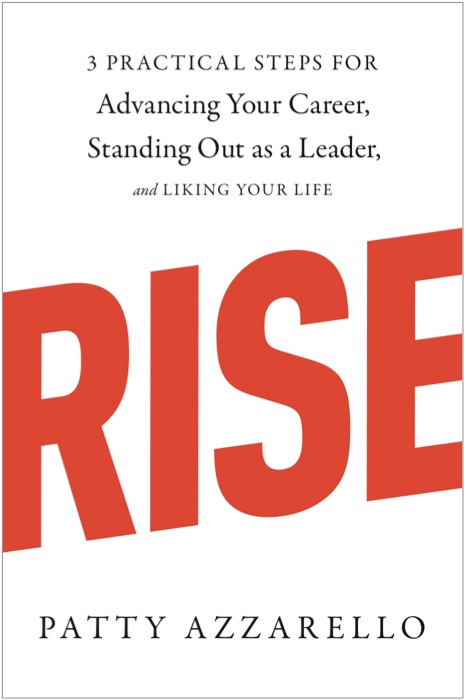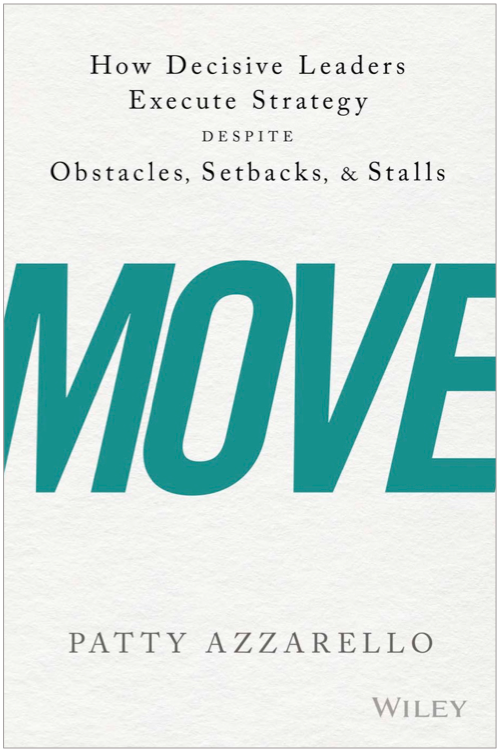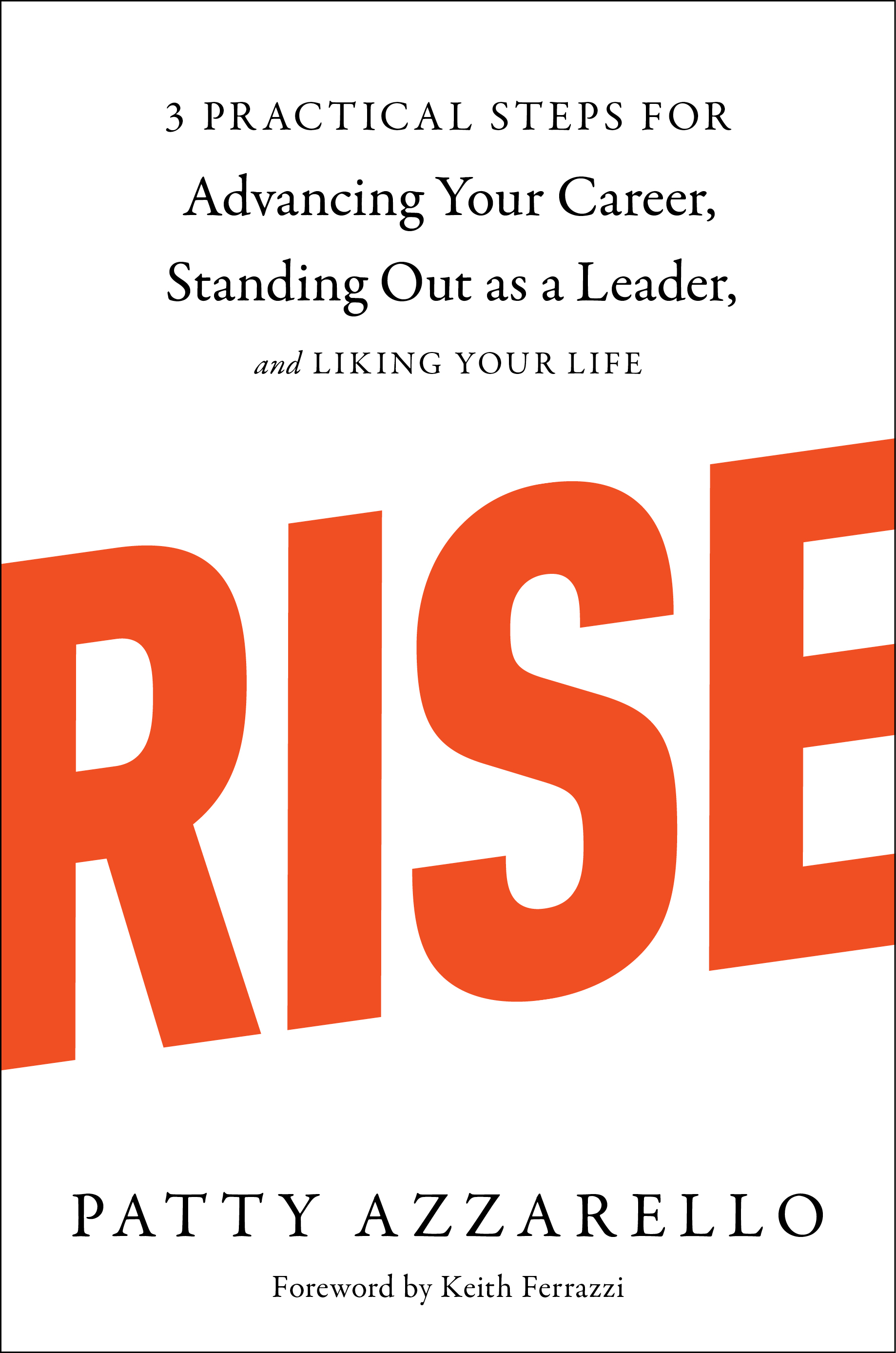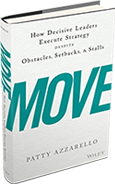As we begin the calendar year, I have received many questions about strategic business planning and how to make it more effective.
I have found myself repeating the same ideas, so I decided to collect them in a blog post, as well as create bundle of expert webinars on the topic. (more info below)
I have had the opportunity to interview 3 remarkable experts on strategy. Each of them has left me with one BIG IDEA that has changed the way I think about strategic planning, and has improved every strategic plan I have done or advised clients on ever since.
The Three Big Ideas:
1. Disconnect strategic planning from the budget process
2. Make sure your plan describes what you will DO
3. Focus: Be right or wrong, but not confused!
1. Disconnect Strategic Planning from the Budget Process

Bob Kaplan, Former McKinsey Director
In my interview with Bob Kaplan, one of the key ideas he discussed is how most strategies are doomed from the start by being connected to the annual budget process – because the money always wins.
Strategy and financial planning require different skills, timelines, and different measures of success. Strategy is creative. Financial Planning is operational. Organizations are more practiced at financial planning. Creative, strategic planning is less familiar and more uncomfortable.
You must separate the two streams of work, or you will get a plan that looks very much like last year’s plan, and your strategic ideas will be constrained by how much extra money you have in the current budget.
When connected to the numbers, your plan will be, almost by definition, absent any real strategic thinking.
Bob made several other important points about data, process and innovation. You can hear them all in the interview.
My Key Learning:
Deliver your numbers on the planned schedule as you must, and then run a strategic planning exercise completely separately, on a different calendar. This is the only way your strategic plan will every be strategic.
If you are thinking, “But we can’t go back and surprise the board or executive committee and ask for something different after we give them our operating plan”, think about it this way…
If you have a big customer leave you, or a competitor makes a dramatic move (or the market crashes)– you will need to go back to the board with reactive re-work of your operating plan anyway.
So why not come up with a brilliant forward-looking strategy and associated investment plan? Then go back to the board and say, “We’d like to talk about a new investment outside our existing operating plan.
2. Good strategy is about what you are DOING
Dr. Richard Rumelt, Author, Speaker and Strategy Consultant

Bad Strategy: (The Big Idea)
It was very exciting to get a chance to interview Dr. Richard Rumelt, because I absolutely loved his book Good Strategy/Bad Strategy.
In his book and in our interview, there was a key, breakthrough idea for me:
The problem in most companies is not merely the lack of a Good Strategy, it’s that there is an active Bad Strategy in its place.
Bad strategy often takes the form of talking. Talking about big ambitions and vague goals that no one knows how to achieve — using high-sounding words like “growth” and “shareholder value”, or “retain the best talent” or “maintain a culture of innovation”.
This makes Bad Strategy because these things don’t tell you what to DO. It’s Bad Strategy because it’s like a quarterback saying, “Let’s win”.
He connected the dots for me so directly by stating simply that Good Strategy is about what you are DOING.
Strategy must answer “how are we going to solve the most significant barrier to forward progress?”
Dr. Rumelt talked about many instances of Bad Strategy that are important to avoid, and gave great ideas for putting Good Strategy in place. Listen to the complete interview for more of his ideas on Bad and Good Strategy.
My key learning:
When I now look at a strategy I ask two simple questions:
1. Does this describe what we will DO and how we will measure it?
2. Does this identify the obstacles we must overcome?
If not, it’s a bad strategy. Go back to the table, and focus the strategic discussion on these two questions.
An example: Strategy to lose weight
Here’s a non-business example that helps define the right kind answers to these important questions:
Many people also start the new year with the ambition to lose weight and become more fit. So if you state your strategy in these terms: I want to lose 20 pounds in 3 months by better diet and exercise. That is a bad strategy.
Why, because it doesn’t say specifically what you will DO and state what problems you will overcome. To turn this into a good strategy ask and answer:
1. What will I do?
- I will eat [these specific foods], and not eat [these specific foods]
- I will exercise on [this specific schedule]
(better, but not good strategy yet)
2. What problems will I need to overcome and how?
- When I travel I will overcome the exercise/time issue by doing…
- When I travel I will overcome the food choice issue by doing…
- When I get stressed I will overcome my tendency to eat too much of the wrong things by doing…
- I will deal with getting discouraged and bored with this by creating [this specific motivation and support]
(Now you’ve got a good strategy.)
To test your business strategy simply ask these two questions.
1. Does it define simply, what will we do specifically?
2. Does it state what obstacles will we overcome and how?
3. Focus: Be right or wrong, but not confused!

Jim Davis, CEO and technology executive (and long time mentor of mine) taught me that to lead a strategy you must focus.
You can’t let your organization get overwhelmed by trying to do too many things. Make sure your strategy prioritizes a few key things — and them get them done!
This requires strength as a leader because not everyone will be happy with what you choose to focus on. People will argue. But these will be the noisy few.
Most people just want to succeed at something, and will be happy with the clear focus. Don’t waiver.
The focus is more actually more important than picking the exact, correct three things. Just get something done. Jim also made some great points about process, communication, and developing people.
Listen to the complete interview to hear more ideas on clarifying strategy and getting it executed.
My key learning:
People really do like to get things done!
I’ve turned what I learned from Jim into my concept of Ruthless Priorities.
Pick one strategic thing and actually finish it. Ruthless priorities are the things you refuse to put at risk. It’s not as though you do nothing else at all, you just choose to make sure these very few things are not at risk and that they get done.
Focus and getting things done builds credibility and momentum in the organization.
The more your organization gets experience at finishing things, the more motivated they will be, and the more effective they will be at executing strategy.
But as a leader you need to have a thick skin to decide and stick to it — and support the people trying to do the right thing when short term pressures tempt you off course.
Get these 3 complete interviews, plus a bonus!
Strategic Planning Webinar Bundle (get a 50% discount in January!)
Includes:
1. Richard Rumelt’s Interview: Good Strategy/Bad Strategy (mp3 download)
2. Bob Kaplan’s Interview: Is Your Strategy any Good? (mp3 download)
3. Jim Davis’s Interview: Leading and Managing (mp3 download)
4. And as a bonus, my Webinar on Ruthless Priorities and Strategy (mp3 download plus worksheets and templates)
This is a $50 value for $24.99
Order this package now to make sure your business strategy will have enough impact.
Order the Strategic Planning Package Now
Note: Members of Azzarello Group can download all these interviews and webinar for free from the Member Library.
Was this useful?
If you found this article useful, please help me share it with others and encourage them to subscribe to this Blog for free.
About Patty
Patty Azzarello is an executive, best-selling author, speaker and CEO/Business Advisor. She became the youngest general manager at HP at the age of 33, ran a billion dollar software business at 35 and became a CEO for the first time at 38 (all without turning into a self-centered, miserable jerk)
You can find Patty at www.AzzarelloGroup.com, follow her on twitter or facebook, or read her book RISE…3 Practical Steps for Advancing Your Career, Standing Out as a Leader, AND Liking Your Life.





